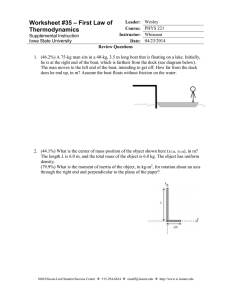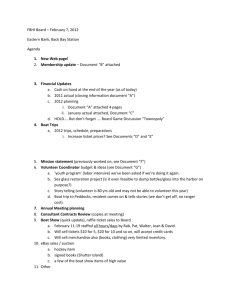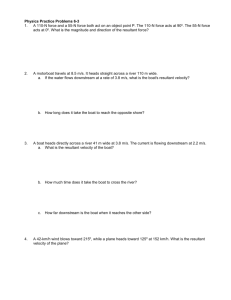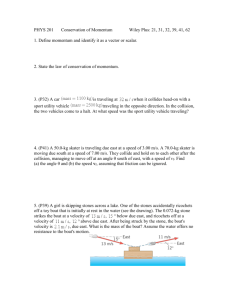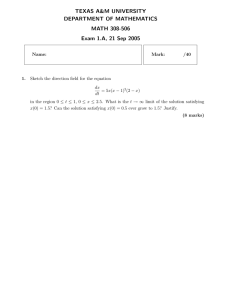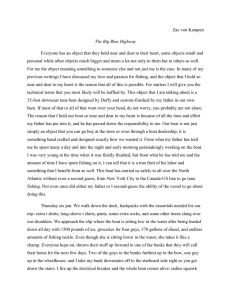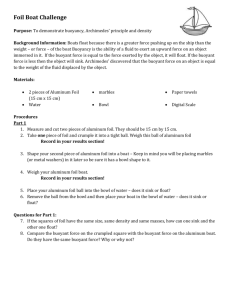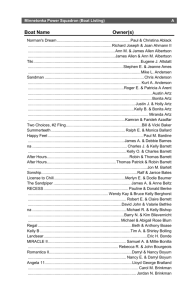The MOTION MAP would look like this
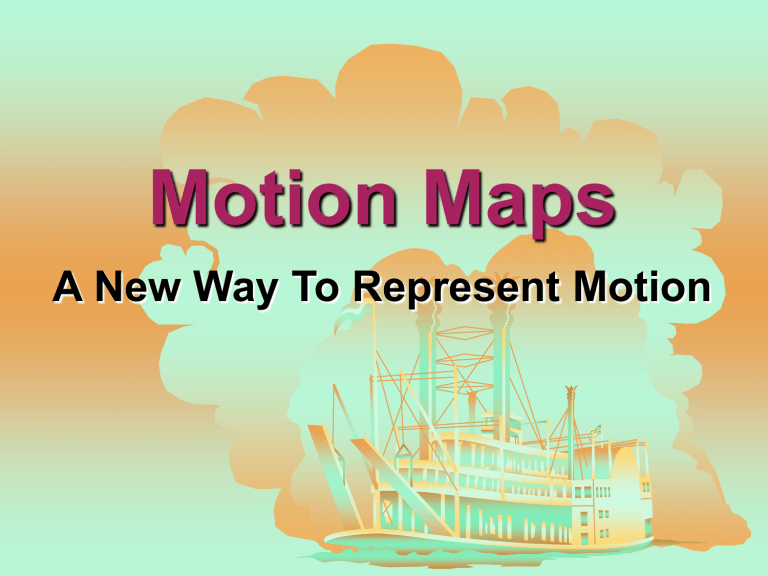
Motion Maps
A New Way To Represent Motion
Motion Maps
Suppose you took a strobe photo of a boat moving to the right at constant velocity, where each image revealed the position of the boat at one second intervals.
• This is a MOTION MAP that represents the boat. The DOTS represent the POSITION of the boat at each time interval.
• The ARROWS represent the
VELOCITY of the boat. (Recall that 1 second passes between photos)
If the boat were moving faster, the strobe photo might look like this:
The MOTION MAP would look like this:
(Note: the distance between dots is greater than before; but each interval is still one second.)
If the boat were moving to the left, the photo and motion map would look like this:
More complicated motion can be represented as well.
Here, an object moves to the right, constant velocity; stops for two seconds, then moves left at twice the initial speed.
Change of Direction
• Note that when the direction changes, we put the new dots above the old ones. The bottom of a motion map is the starting position.
7
Consider the following motion map for two cyclists:
A
B
Notice that they have different starting positions!
Even though the dots do not
A line up,
@ the first dot represents a picture taken when time = 0 s, the
2nd dot a picture taken when time = 1 s, and so on.
t = 0 s t = 1 s t = 2 s t = 3 s
A
B t = 0 s t = 1 s t = 2 s t = 3 s
Here is a Position-Time graph of the same motion. At t = 2 s, both cyclists are at the same position.
B
X
(m)
A
2
T (s)


